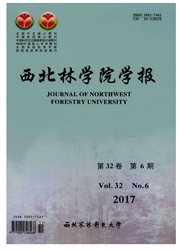

 中文摘要:
中文摘要:
研究了黄龙山林区基于小班对象的森林生物量遥感估测模型的构建和合理性判断。建立森林生物量所需的各种数据包括2011年TM影像和黄龙山林区2008年森林调查数据。分别采用SPSS软件中线性回归的逐步回归法和基于MATLAB的B-P神经网络构建了黄龙山森林生物量遥感模型;采用逐步回归法,建立了多元回归模型,其相关系数较低(0.554),拟合精度为73.08%,均方根误差为14.98;B-P神经网络建立的模型拟合精度达到87.49%,均方根误差10.71,小班生物量实测值和估测值相关系数为0.738。利用2011年黄龙山林区TM影像图,结合B-P神经网络模型获得了黄龙山林区生物量分布图。
 英文摘要:
英文摘要:
The construction of the models for the estimation of forest biomass in the scale of subcompartment and the assessment of the rationality of the models were investigated in Honglongshan forest area, Shaanxi,China.The data used for building the biomass model included TM images(2011)and forestry resource survey in 2008.Two methods were adopted for the construction of biomass models:stepwise regression equation of linear regression in SPSS software and B-P neural network based on MAT LAB.Models established from the first methods demonstrated lower correlation coefficient(0.554)and fitting accuracy(73.08%)and the root mean square error(RMSE)was 14.98.By the second method however,the fitting accuracy was 87.49%,the RMSE was 10.71,the correlation of the prediction values and observed values was 0.738.The distribution of forest biomass of the Huanglong Mountain was established based on the TM images of the Huanglong Mountain in 2011and the neural network model.
 同期刊论文项目
同期刊论文项目
 同项目期刊论文
同项目期刊论文
 期刊信息
期刊信息
